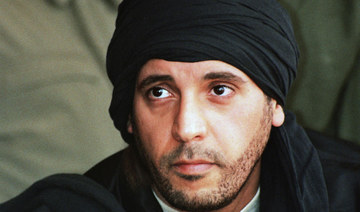AL-MUKALLA: Two soldiers were killed and eight were wounded when an explosion ripped through a convoy of local military leaders in Yemen’s port city of Aden on Thursday, a local security official told Arab News.
A car that was parked on the road and rigged with explosives hit the convoy of Nabil Al-Mashushi and Mohsen Al-Wali, commanders of separatist military units in the Aden district of Madinat Asha'ab.
Al-Mashushi appeared in a video after the explosion, saying he and his friend Al-Wali were unhurt and vowing to punish those who plotted the attack.
Al-Mashushi led separatist forces during a major offensive to liberate western coastal areas from the Iran-backed Houthis in 2017.
The two leaders took part in clashes between the separatist Southern Transitional Council and the Yemeni government in Aden and Abyan from 2018 to 2020.
Aden, which is Yemen’s interim capital, has enjoyed relative calm since late last year when Yemen’s new unity government was formed and later returned to the city under the Riyadh Agreement.
A new governor and security chief for the city were appointed under the same deal, defusing months of tension between different groups in Yemen.
Nobody claimed responsibility for Thursday’s convoy attack, but local officials pointed fingers at the Houthis, who staged a missile strike on Aden airport last year.
Yemeni Prime Minister Maeen Abdul Malik Saeed ordered army commanders in the southern city of Taiz to move ahead with an offensive to break the Houthi siege on the city and ease Houthi military pressure on the central city of Marib, the official Saba news agency reported on Wednesday.
He told the governor of Taiz, Nabil Shamsan, and the commander of Taiz Axis, Maj. Khaled Fadhel, to press ahead until government forces fully ended the rebels’ six-year-long siege on the city.
“The battle that the Yemeni people are waging against the Houthi militia and its racist project affiliated with Iran is a national and Arab battle, and it must be won,” the prime minister told the two officials.
Abdul Basit Al-Baher, a Yemeni army spokesperson in Taiz, demanded the government intensify military support to troops in Taiz and pay their salaries to quickly defeat the Houthis.
Fighting broke out on Thursday in different locations northeast of Taiz province as government troops seized control of several buildings and pushed toward the Houthi-controlled Hoban district.
In the central province of Marib, the army and allied tribesmen on Thursday killed several Houthi fighters, including a military leader, in heavy fighting in Al-Kasara and other fronts, local media said.
On Wednesday the Houthis mourned the death of Brig. Ahmed Mohammed Ahmed, the commander of Al-Manar Brigade, who was killed in fighting with government forces. Local media reported that he was killed along with dozens of others.
The Houthis earlier last month resumed a major military offensive to seize control of the oil-rich city of Marib, the government’s last bastion in the north.























